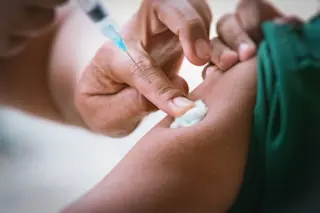Got a printer? Then you may someday be able to print out a new heart. By packing a printer full of cells instead of ink, Japanese scientist Makoto Nakamura wants to construct a human heart. But don’t skip a beat just yet: Nakamura needs another 20 years to make what sounds like a science fiction dream into a reality. The secret, he thinks, is bioprinting, a process that is used to create 3-D structures in the same way a printer uses ink to create words and images on a page. The process works like this: First the cells clump together and flow like liquid, then a printer drops the cells down onto a surface, layering the cells on top of each other until the desired object is created. So far Nakamura has used this technique to create a tube that resembles a blood vessel, but he hasn’t gotten near anything ...
Can Scientists Use a Printer to Create a Human Heart?
Discover how scientists aim to print out a new heart using bioprinting techniques with living cells. A future of organ regeneration awaits!
More on Discover
Stay Curious
SubscribeTo The Magazine
Save up to 40% off the cover price when you subscribe to Discover magazine.
Subscribe












